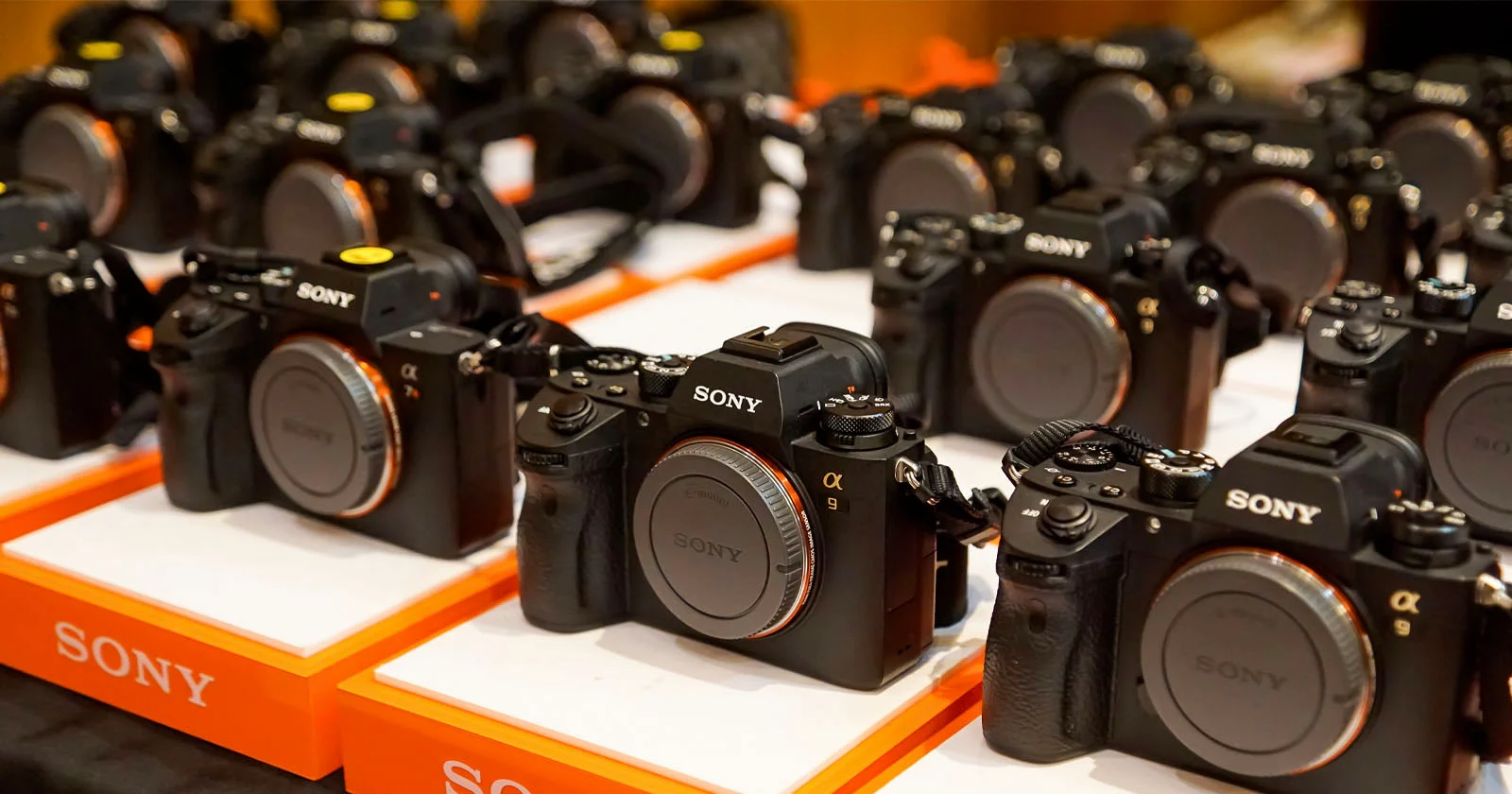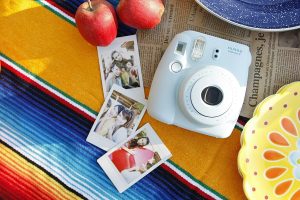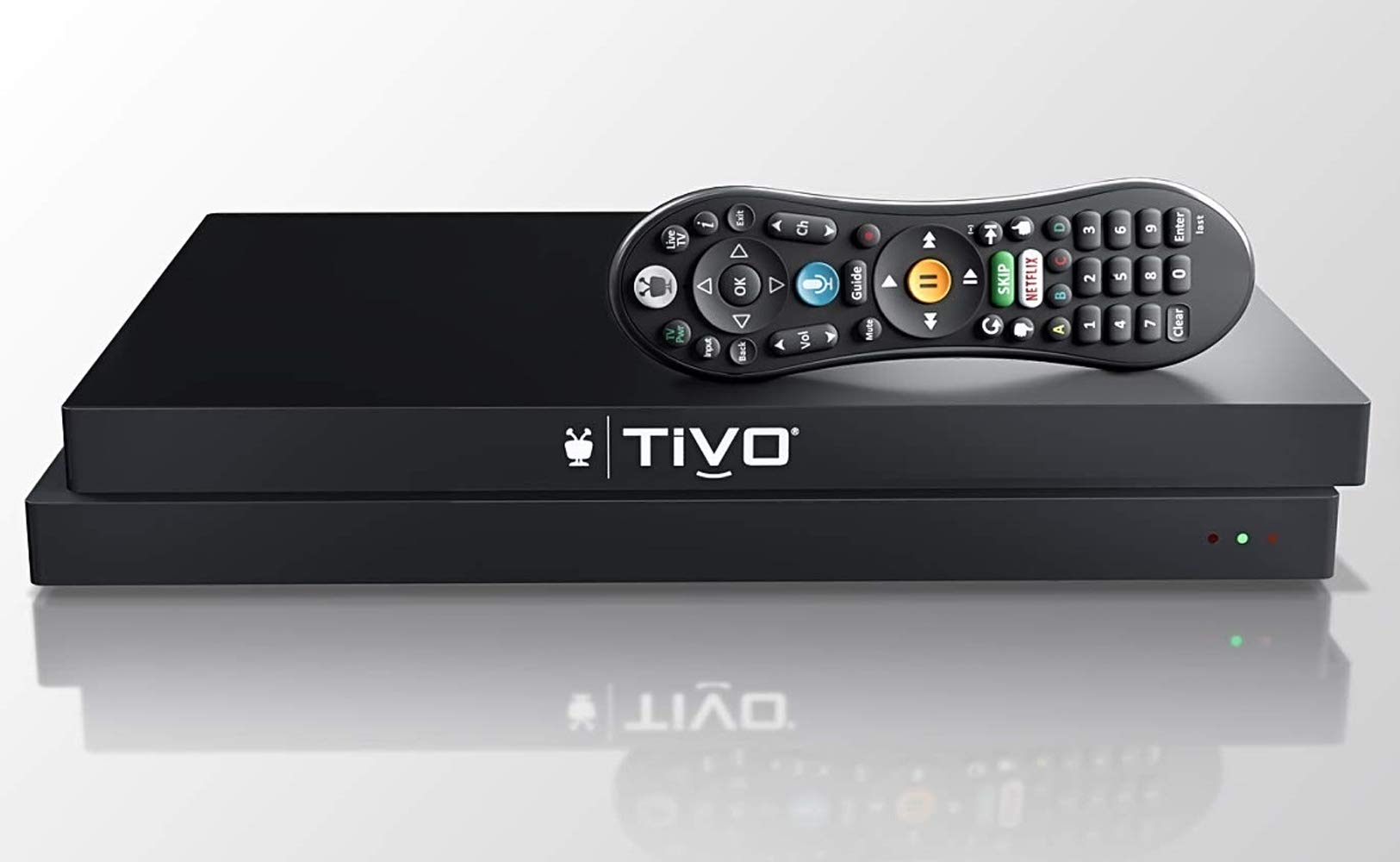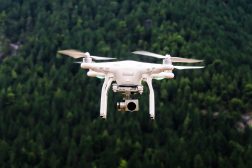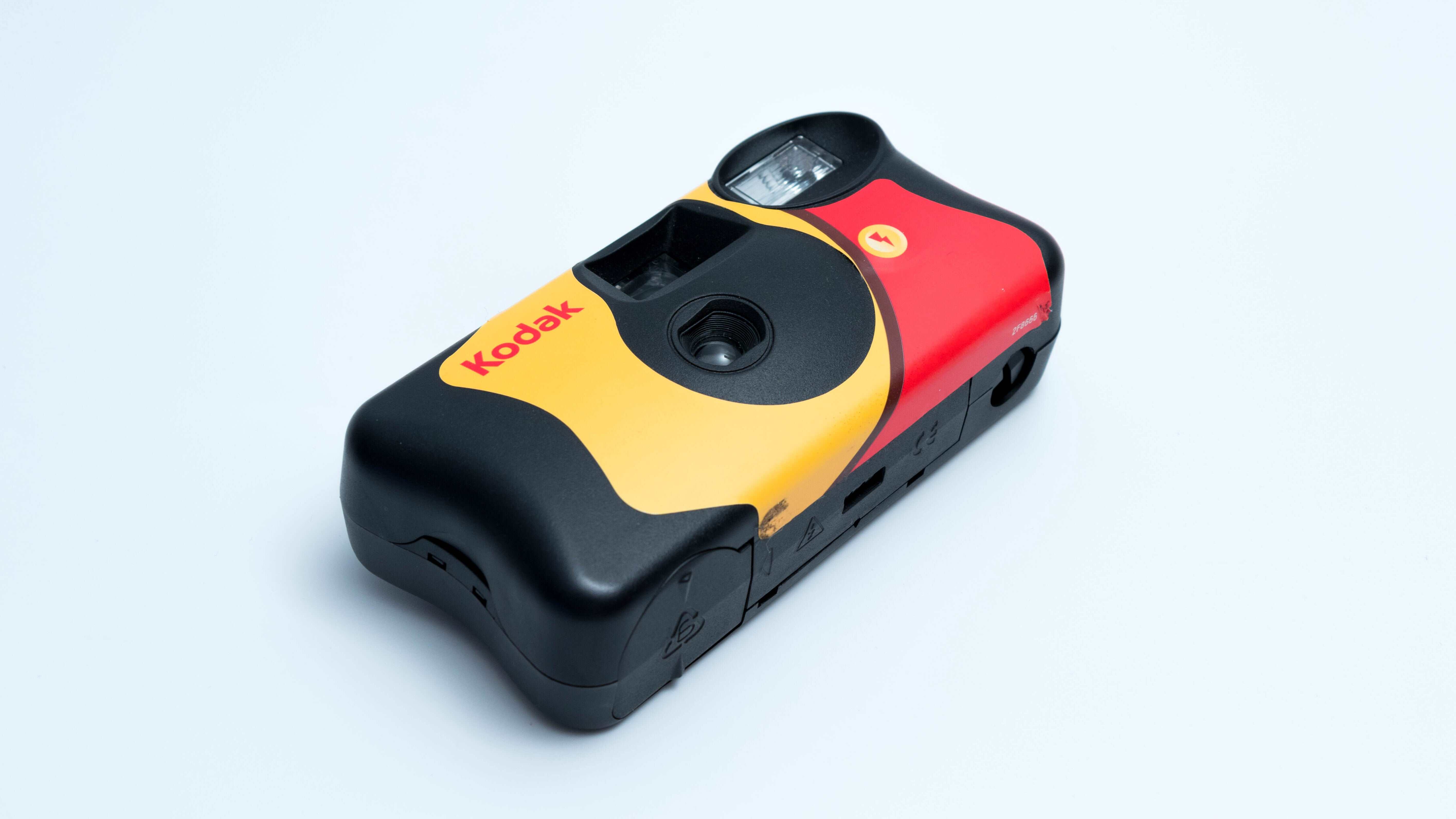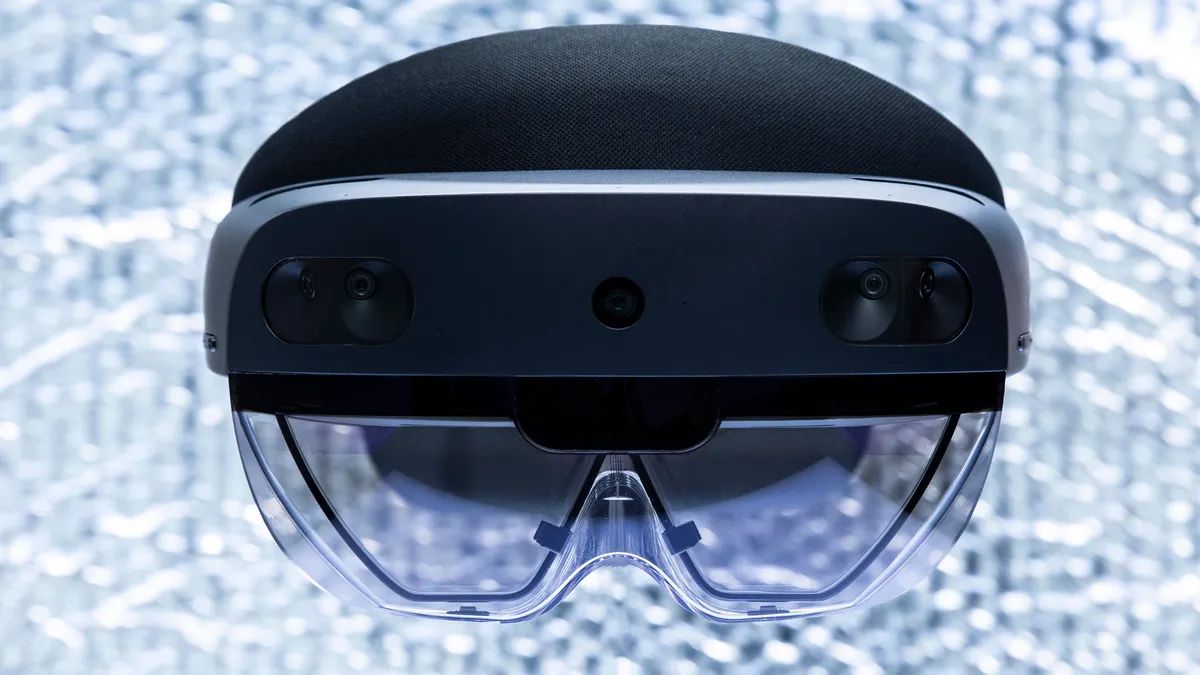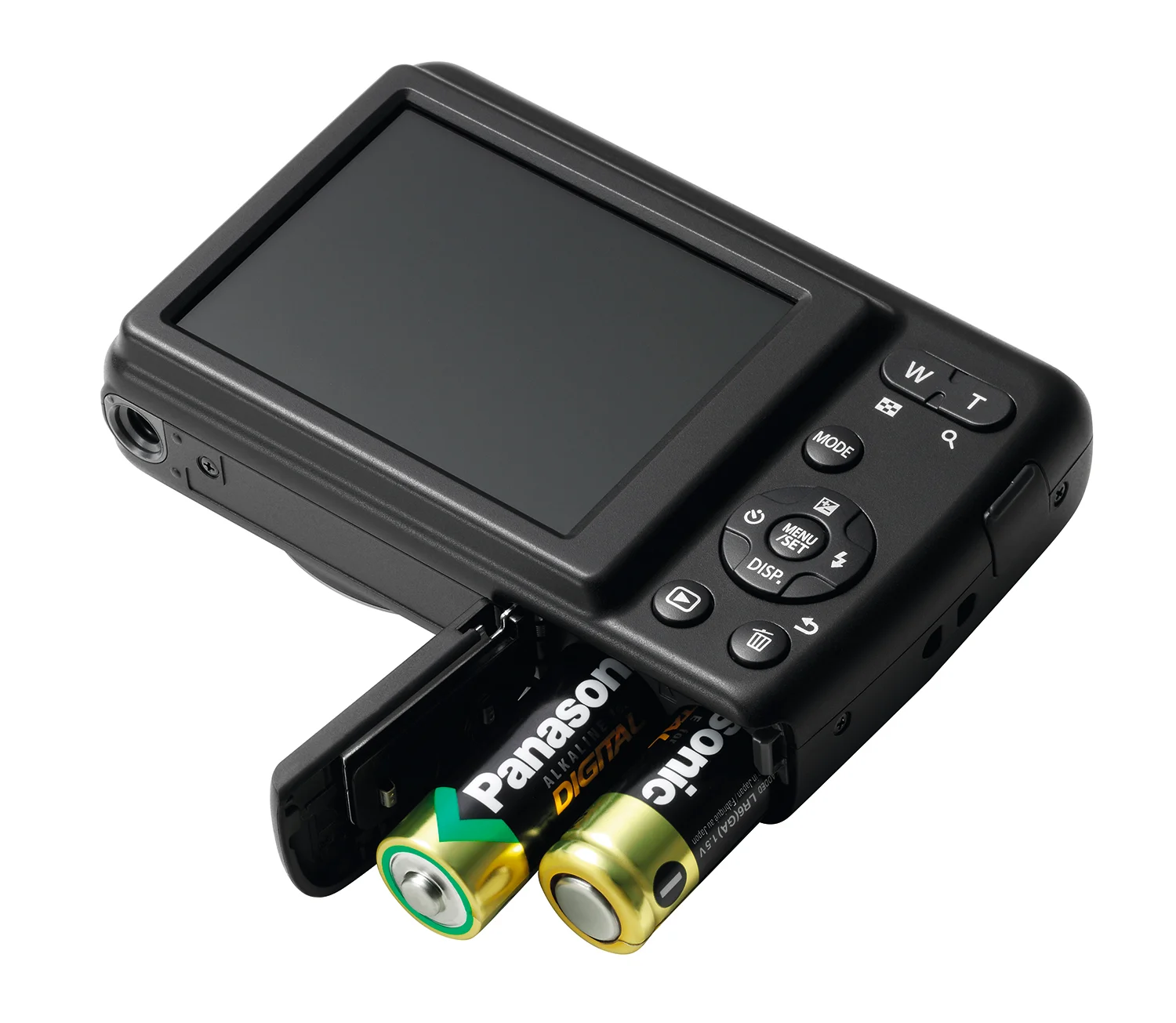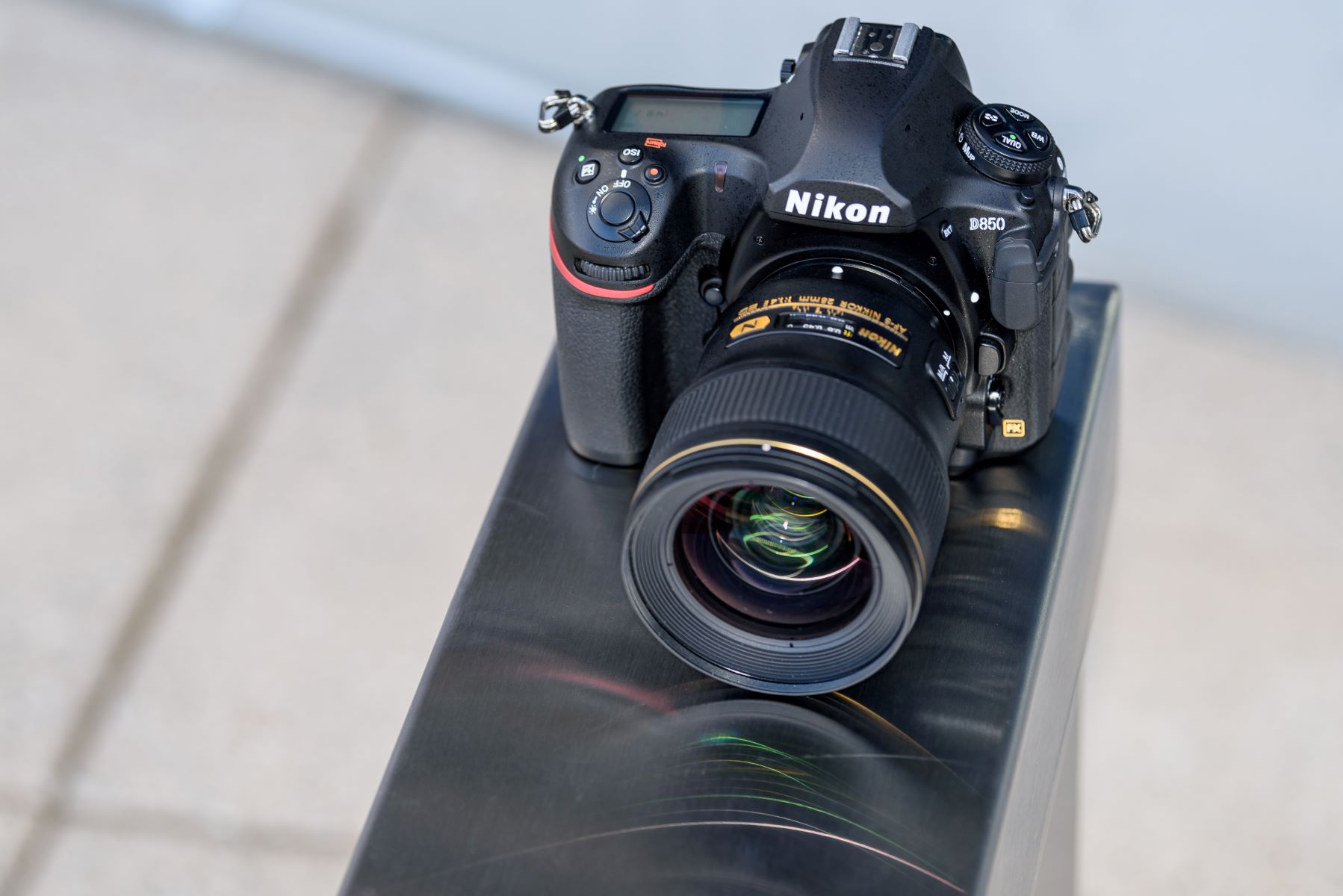Introduction
Welcome to the world of digital photography, where capturing moments and creating memories has become easier and more accessible than ever before. Whether you’re a professional photographer, an enthusiast, or simply looking to upgrade your old camera, understanding the cost of a digital camera is an essential factor in making the right purchase decision.
Digital cameras have revolutionized the photography industry, offering a wide range of options and features to suit various budgets and skill levels. From entry-level point-and-shoot cameras to high-end professional DSLRs, the price spectrum for digital cameras can vary significantly.
In this article, we will explore the factors that affect the cost of a digital camera, compare the different price ranges, and provide tips on finding the best deals. Additionally, we will discuss essential accessories that can enhance your photography experience.
Before we delve into the details, it’s important to note that the cost of a digital camera is influenced by several factors, including the brand reputation, model specifications, features, technology advancements, and market demand. Understanding these aspects will help you make an informed decision based on your needs and budget.
Whether you’re a beginner, an intermediate photographer, or a professional looking to upgrade your gear, this article will serve as a guide to understanding the cost variations and options available in the digital camera market.
So, let’s dive in and explore the exciting world of digital cameras, uncovering the range of options and prices that can help you embark on your photographic journey.
Factors that Affect the Cost of a Digital Camera
When it comes to the cost of a digital camera, several factors come into play that determine its price range. Understanding these factors will help you assess the value and make an informed decision. Here are some key factors that influence the cost of a digital camera:
- Resolution: The resolution of a digital camera refers to the number of pixels it can capture, which directly impacts the image quality. Cameras with higher resolutions tend to be more expensive due to the advanced technology required to produce high-definition images.
- Sensor Size: The sensor is a crucial component that captures the light and converts it into an image. Cameras with larger sensors tend to offer better low-light performance, dynamic range, and overall image quality. As a result, cameras with larger sensors often come with a higher price tag.
- Brand and Model: Established camera brands with a reputation for producing high-quality devices often come at a premium price. Additionally, the specific model within a brand’s lineup can influence the cost, as higher-end models typically offer more advanced features and capabilities.
- Features and Technology: Advanced features such as image stabilization, autofocus capabilities, burst mode, and wireless connectivity can significantly impact the price of a digital camera. The inclusion of the latest technology and innovative features usually drives up the cost.
- Build Quality and Durability: Cameras with robust construction, weather sealing, and durability features are designed to withstand harsh conditions and heavy use. These durable cameras generally come at a higher cost due to the premium materials and engineering involved.
- Lens Compatibility and Interchangeability: Interchangeable lens systems offer versatility and allow photographers to choose from a wide range of lenses for different shooting scenarios. Cameras that support various lens options tend to be more expensive, but they offer flexibility and room for growth as your skills and needs evolve.
- Video Capabilities: If you’re interested in capturing high-quality videos, a digital camera with advanced video capabilities, such as 4K recording or slow-motion options, may be desirable. However, these additional video features can contribute to a higher price.
- Market Demand and Availability: Supply and demand dynamics in the market can influence the cost of a digital camera. Popular models and limited-edition releases often come with a higher price due to their desirability and potential scarcity.
Keep in mind that it’s essential to assess your own needs, budget, and shooting requirements when considering the factors mentioned above. By prioritizing the features that matter most to you, you can find a digital camera that strikes the right balance between cost and functionality.
Entry-level Digital Cameras
If you’re new to photography or looking for a budget-friendly option, entry-level digital cameras are a great place to start. These cameras are designed to be user-friendly, affordable, and provide basic functionality for capturing everyday moments. While they may not offer all the advanced features of higher-end models, entry-level cameras can still deliver impressive image quality and versatility.
Entry-level digital cameras typically have lower resolutions, ranging from 12 to 24 megapixels. While this may be lower compared to more expensive models, it is still more than adequate for everyday photography needs, including social media sharing and printing small to medium-sized prints.
One of the key advantages of entry-level cameras is their simplicity and ease of use. They often feature automatic shooting modes that adjust settings for different scenes, making it easier for beginners to capture great photos without having to understand the technical aspects of photography.
In terms of price, entry-level digital cameras can range from as low as $100 to $500, depending on the brand, model, and included features. While these cameras may lack advanced features like manual controls or a wide range of lens options, they still offer excellent value for those on a tight budget or just starting their photographic journey.
Some popular entry-level digital cameras include the Canon EOS Rebel series, Nikon D3000 series, and Sony Alpha a6000. These cameras offer a good balance between price and performance, providing a solid foundation for beginners to explore their creativity and learn the basics of photography.
Additionally, entry-level digital cameras often come with built-in Wi-Fi or Bluetooth connectivity, allowing for easy photo sharing and transfer to mobile devices or computers. This feature is particularly useful for social media enthusiasts or those who want to quickly share their images with friends and family.
While entry-level cameras may not offer the same level of customization or advanced features as higher-end models, they can still produce impressive results, especially in well-lit conditions. With practice and an understanding of composition and lighting, beginners can capture stunning images with these affordable options.
Overall, entry-level digital cameras provide an accessible entry point into the world of photography. They offer a budget-friendly option for beginners to learn and grow their skills while still enjoying the benefits of digital image capture. When considering an entry-level camera, think about your specific needs, budget, and desired features to find the best option that suits your photographic journey.
Mid-range Digital Cameras
For photography enthusiasts looking for more advanced features and enhanced performance without breaking the bank, mid-range digital cameras offer a compelling option. These cameras strike a balance between affordability and functionality, making them a popular choice for those who want to take their photography skills to the next level.
Mid-range digital cameras typically come with higher sensor resolutions, ranging from 24 to 36 megapixels, allowing for sharper and more detailed images. This higher resolution is especially beneficial for photographers who intend to print larger-sized prints or require extensive cropping flexibility.
In addition to increased resolution, mid-range cameras often feature larger image sensors, such as APS-C or 35mm full-frame sensors. These larger sensors deliver improved low-light performance, better dynamic range, and enhanced overall image quality, making them ideal for various photography genres, including landscape, portrait, and street photography.
One of the notable advantages of mid-range cameras is the inclusion of advanced features and manual controls. These cameras offer a wide range of shooting modes, including aperture priority, shutter priority, and full manual, giving photographers greater control over their creative vision and allowing for experimentation with different settings.
Due to their popularity, mid-range cameras benefit from a robust selection of compatible lenses from various manufacturers, offering photographers the flexibility to adapt their gear to different shooting scenarios. This versatility enables photographers to explore different perspectives and capture images with unique characteristics.
In terms of price, mid-range digital cameras typically range from $600 to $1500, depending on the brand, model, and included features. While they may have a higher price tag compared to entry-level cameras, they offer a significant upgrade in terms of image quality and advanced features, making them a worthwhile investment for photography enthusiasts.
Some popular mid-range digital cameras include the Sony A7 series, Canon EOS 80D, and Nikon D7500. These cameras are well-regarded for their superior image quality, advanced autofocus systems, and robust build quality, which cater to the needs of intermediate photographers.
Additionally, mid-range cameras often offer faster burst shooting speeds, better autofocus performance, and improved video capabilities compared to entry-level models, making them suitable for capturing action, sports, and even vlogging.
Overall, mid-range digital cameras provide a significant upgrade in terms of image quality, manual controls, and advanced features without reaching the price range of professional-grade cameras. They are an excellent choice for photography enthusiasts who have outgrown their entry-level camera or want to explore more creative possibilities without compromising on budget.
High-end Digital Cameras
When it comes to uncompromising image quality, advanced features, and professional-grade performance, high-end digital cameras are the top choice for professional photographers and avid enthusiasts. These cameras represent the pinnacle of technology and are designed to deliver exceptional image quality, versatility, and customization options.
High-end digital cameras are equipped with full-frame image sensors, which offer the largest surface area and allow for maximum light capture. These sensors provide superior image quality, excellent low-light performance, and improved dynamic range, making them ideal for photographers who demand the highest level of detail and clarity in their images.
Resolution-wise, high-end cameras often boast impressive megapixel counts, ranging from 40 to 50+ megapixels. With this level of resolution, photographers can capture incredibly detailed images suitable for large-scale prints or situations that require extensive post-processing.
In addition to their exceptional image quality, high-end digital cameras offer advanced features and customization options. These cameras typically have robust autofocus systems, allowing for precise and responsive focusing even in challenging shooting conditions. They also offer a wide range of shooting modes, customizable buttons, and extensive menu options, providing photographers with full control over every aspect of the image-making process.
High-end cameras often include features like built-in image stabilization, allowing for handheld shooting at slower shutter speeds, resulting in sharper images. They also offer high-speed continuous shooting, allowing photographers to capture fast-moving subjects with ease.
When it comes to price, high-end digital cameras can have a considerable investment, ranging from $2000 to $7000 and beyond. This higher price reflects the advanced technology, professional-grade build quality, and extensive feature set that these cameras offer.
Some renowned high-end digital cameras include the Canon EOS 5D Mark IV, Nikon D850, and Sony Alpha a7R IV. These cameras are well-regarded for their exceptional image quality, rugged construction, and cutting-edge technology, making them the go-to choice for professional photographers.
Besides the impressive still image capabilities, high-end cameras often excel in video recording as well. They offer high-quality video recording options, including 4K resolution, high frame rates, and advanced video codecs. These features make high-end cameras a popular choice among videographers and content creators.
In summary, high-end digital cameras are the top-tier option for professionals and enthusiasts who demand uncompromised image quality, advanced features, and extensive customization options. While they come with a higher price tag, they offer unmatched performance and versatility, allowing photographers to push their creative boundaries and capture stunning images in any situation.
Professional Digital Cameras
For professional photographers who demand the highest level of performance, durability, and versatility, professional digital cameras are the ultimate tool for capturing stunning images in any situation. These cameras are designed to meet the demanding needs of professionals who require exceptional image quality, robust build quality, and advanced features to achieve their creative vision.
Professional digital cameras feature full-frame image sensors, offering the largest surface area and maximum light capture. These sensors provide superior image quality, exceptional dynamic range, and impressive low-light performance, allowing photographers to produce stunning, high-resolution images with unparalleled detail and clarity.
In terms of resolution, professional cameras typically have high megapixel counts, ranging from 30 to 60+ megapixels. This high resolution enables photographers to capture intricate details and offers greater flexibility for cropping and post-processing without compromising image quality.
Professional cameras are built to withstand the rigors of professional use, often featuring robust construction and weather-sealing. These cameras are designed to withstand extreme conditions, making them suitable for outdoor and location shoots, including wildlife, sports, and documentary photography.
One of the key advantages of professional cameras is their advanced autofocus systems. These systems employ sophisticated algorithms and multiple autofocus points to ensure precise and reliable focusing even in challenging shooting scenarios. Additionally, professional cameras offer high-speed continuous shooting capabilities, allowing photographers to capture fast-paced action with ease.
Professional digital cameras often come with extensive customization options, allowing photographers to fine-tune settings according to their shooting style and preferences. These cameras also offer a wide range of shooting modes, advanced metering options, and professional-grade video recording capabilities, making them versatile tools for multimedia content creation.
When it comes to price, professional digital cameras can range from $3000 to $10,000 and beyond. The higher price reflects the advanced technology, exceptional build quality, and extensive feature set that these cameras offer. However, for professionals who rely on their equipment to deliver exceptional results, the investment is worthwhile.
Some renowned professional digital cameras include the Canon EOS-1D X Mark III, Nikon D6, and Sony Alpha a9 II. These cameras are engineered to deliver top-tier performance and are trusted by professional photographers in various fields, including fashion, commercial, and wedding photography.
Professional cameras also offer extensive compatibility with a wide range of lenses and accessories, providing photographers with the flexibility to adapt their gear to different shooting environments and creative needs.
In summary, professional digital cameras are the pinnacle of imaging technology, offering unmatched performance, versatility, and durability. They are designed to meet the demanding needs of professionals and provide exceptional image quality, advanced features, and extensive customization options to bring their creative vision to life in the most challenging shooting conditions.
Compact vs. DSLR Cameras: Cost Comparison
When it comes to deciding between a compact camera and a DSLR (digital single-lens reflex) camera, understanding the cost differences can play a crucial role in making the right choice for your photography needs. While both options have their advantages and disadvantages, considering their respective costs can help you determine which type of camera is the best fit for your budget and requirements.
Compact cameras, also known as point-and-shoot cameras, are typically smaller in size, lightweight, and easy to carry around. They are designed for simplicity and convenience, offering automatic shooting modes and compact built-in lenses. Compact cameras are a more affordable option compared to DSLRs, with prices ranging from $100 to $500.
While compact cameras may not offer the same level of manual control or image quality as DSLRs, they are perfect for casual photographers, travel enthusiasts, and those who prioritize portability and ease of use. Compact cameras are great for capturing everyday moments, family gatherings, and other events where convenience and simplicity are key.
On the other hand, DSLR cameras are larger in size and offer more advanced features and superior image quality. These cameras are designed for photographers who desire full creative control over their images. DSLRs allow for interchangeable lenses, providing greater versatility and potential for creative expression. The cost of DSLR cameras can range from $500 to $5000 or more, depending on the brand, model, and included features.
While DSLR cameras may have a higher entry cost, they provide professional-grade image quality, faster autofocus, customizable manual controls, and the ability to use a wide variety of lenses and accessories. DSLRs are ideal for photographers who want to dive deeper into the art of photography, including landscape, portrait, wildlife, sports, and other specialized genres.
It’s worth noting that the overall cost of both compact and DSLR cameras can vary based on additional factors such as lens selection, accessories, and storage media. Investing in extra lenses, external flash units, tripods, and other accessories can further enhance your photography experience but also add to the overall cost.
Ultimately, the choice between a compact camera and a DSLR depends on your specific needs, preferences, and budget. If you prioritize convenience, ease of use, and affordability, a compact camera may be the better option. But if you value creative control, superior image quality, and the ability to expand your photographic capabilities, a DSLR may be worth the investment.
Before making a decision, consider evaluating your photography goals, preferred shooting style, and the level of control and flexibility you desire in your images. Research and test different camera models within your budget to determine which one feels comfortable, suits your shooting requirements, and offers the features that align with your artistic vision.
Finding the Best Deals on Digital Cameras
When it comes to purchasing a digital camera, getting the best deal is always a top priority. While digital cameras can be a significant investment, there are several strategies you can employ to find the best deals and make the most of your budget. Here are some tips to help you find the best deals on digital cameras:
- Research and Compare Prices: Before making a purchase, take the time to research and compare prices from different retailers. Online marketplaces, camera specialty stores, and even manufacturer websites often have competitive prices. Keep an eye out for seasonal sales, discounts, and special promotions that can offer significant savings.
- Consider Buying the Previous Generation Model: Camera manufacturers regularly release new models with updated features. Consider purchasing the previous generation model, as it often comes at a discounted price when a new model is released. The difference in features may be minimal, but the savings can be substantial.
- Look for Bundle Deals: Many retailers offer bundle deals that include additional accessories such as lenses, memory cards, camera bags, and tripods. Purchasing a bundle can often be more cost-effective than buying each item separately. Be sure to evaluate the value of the included accessories to ensure they align with your needs.
- Consider Refurbished or Used Cameras: Refurbished or used cameras can be a great way to save money. These cameras undergo thorough inspections and repairs by the manufacturer or authorized reseller, ensuring they meet the original specifications. While they may show minimal signs of wear, they are generally in excellent working condition and come with a warranty.
- Utilize Cashback and Rewards Programs: Some retailers and credit card companies offer cashback or rewards programs that can earn you points, discounts, or cashback on your camera purchase. Take advantage of these programs to maximize your savings.
- Consider Buying Online: Online retailers often have competitive prices due to their lower overhead costs. Take advantage of online marketplaces and reputable camera retailers to find attractive deals. Keep in mind to purchase from authorized sellers to ensure warranty coverage and authenticity.
- Read Reviews and Consider Value for Money: Before committing to a specific camera model, read reviews and consider the overall value for money. A camera with excellent reviews and a reputation for reliability and performance can be a worthwhile investment, even if it may have a higher upfront cost.
- Consider Buying Bundled Lens Kits: If you’re looking to expand your lens options, purchasing a bundled lens kit can be a cost-effective approach. These kits often include a camera body and multiple lenses for different shooting scenarios, offering savings compared to buying each lens separately.
Remember to keep an eye out for warranty coverage, return policies, and customer support when purchasing a digital camera. Ensure that the retailer you choose offers reliable customer service and support in case you need assistance with your purchase.
By employing these strategies and keeping a lookout for promotions and deals, you can find the best price for your desired digital camera without compromising on quality or features. With a little research and patience, you can make a smart purchase and capture your precious moments without stretching your budget.
Essential Accessories for Your Digital Camera
As a digital camera owner, investing in essential accessories can greatly enhance your photography experience and help you unleash your creativity. While the camera itself is the primary tool, incorporating the right accessories can expand your capabilities, protect your gear, and take your photography to the next level. Here are some essential accessories for your digital camera:
Lenses: One of the most significant advantages of owning a digital camera is the ability to change lenses. Investing in additional lenses can expand your creative possibilities, allowing you to capture different perspectives and achieve various effects. Consider lenses such as a wide-angle for capturing expansive landscapes, a telephoto for zooming in on distant subjects, and a prime lens for low-light photography.
Tripod: A tripod is a valuable accessory for achieving stable shots and long-exposure photography. It provides a steady base for your camera, eliminating camera shake and enabling precise compositions. Look for a sturdy, lightweight tripod that can be easily carried and is adjustable to different heights and angles.
Camera Bag or Case: Properly protecting and carrying your camera is essential. A camera bag or case keeps your equipment safe from bumps, scratches, and the elements. Look for a bag that offers sufficient padding, compartments for organizing your gear, and comfortable straps for carrying convenience.
Memory Cards: Memory cards are essential for storing your photos and videos. Invest in high-quality, high-capacity memory cards to ensure you have enough space to capture moments without interruption. Consider cards with fast write speeds to facilitate smooth continuous shooting and video recording.
Extra Batteries and Chargers: Having spare batteries and a reliable charger is crucial for extended photo sessions or travel. Carry extra fully charged batteries to avoid running out of power when you need it most. Consider investing in a multi-battery charger for added convenience.
External Flash: An external flash can significantly improve your lighting capabilities, especially in low-light situations or when faced with harsh lighting conditions. Look for a flash that provides adjustable power settings and the ability to bounce the light for more flattering and natural-looking results.
Filters: Filters are versatile accessories that can enhance your images and add creative effects. Consider investing in filters such as UV filters for lens protection, polarizing filters for reducing reflections and increasing color saturation, and neutral density filters for long-exposure photography.
Cleaning Kit: Keeping your camera and lenses clean is essential for maintaining optimal performance and image quality. Invest in a cleaning kit that includes a microfiber cloth, lens cleaning solution, air blower, and a brush to remove dust and debris.
Remote Shutter Release: A remote shutter release allows you to trigger the camera’s shutter without touching the camera, reducing the risk of camera shake during long exposures or self-portraits. This accessory is particularly useful for landscape, astrophotography, and capturing wildlife without disturbing the subject.
Reflectors and Diffusers: Reflectors and diffusers are useful for manipulating light outdoors. Reflectors bounce light onto the subject to fill in shadows, while diffusers soften harsh sunlight. Portable and collapsible options are available that can easily fit into your camera bag.
Camera Strap: A comfortable camera strap is crucial for carrying your camera safely and securely. Consider a strap with padding and adjustable length for a customized fit, ensuring that your camera is easily accessible and comfortable to carry for long periods.
Remote Flash Trigger: If you’re into off-camera flash photography, a remote flash trigger allows you to wirelessly trigger external flashes positioned away from the camera. This accessory enables creative lighting setups and enhances the versatility of your lighting techniques.
These are just a few essential accessories for your digital camera. Depending on your photography interests and shooting style, there may be additional accessories that can further enhance your experience. Remember to invest in high-quality accessories from trusted brands to ensure reliability and longevity.
By carefully selecting and incorporating these useful accessories into your photography toolkit, you will be well-equipped to explore new techniques, protect your gear, and capture breathtaking images in a variety of shooting situations.
Conclusion
Choosing the right digital camera and accessories can significantly impact your photography journey. By understanding the factors that affect a camera’s cost, you can make an informed decision based on your budget and needs. Entry-level cameras provide an affordable and user-friendly option for beginners, while mid-range cameras offer improved image quality and advanced features at a reasonable price. High-end and professional cameras deliver top-notch performance, unrivaled image quality, and a wide range of advanced features for experienced photographers.
When shopping for a digital camera, it’s important to compare prices, consider buying previous generation models, and take advantage of bundle deals and cashback programs to get the best value for your money. Additionally, investing in essential accessories such as lenses, tripods, memory cards, and camera bags can enhance your photography capabilities and protect your gear.
Remember to research, read reviews, and test different camera models to find the one that suits your shooting style, preferences, and budget. Whether you choose a compact, DSLR, or professional camera, each has its own strengths and applications. The key is to match your specific needs and aspirations with the camera that offers the features and performance you desire.
Ultimately, the digital camera and accessories you choose will enable you to capture moments, express your creativity, and preserve memories. With the right tools and a passion for photography, you can embark on an exciting journey of discovery and create stunning visuals that will be cherished for years to come.







